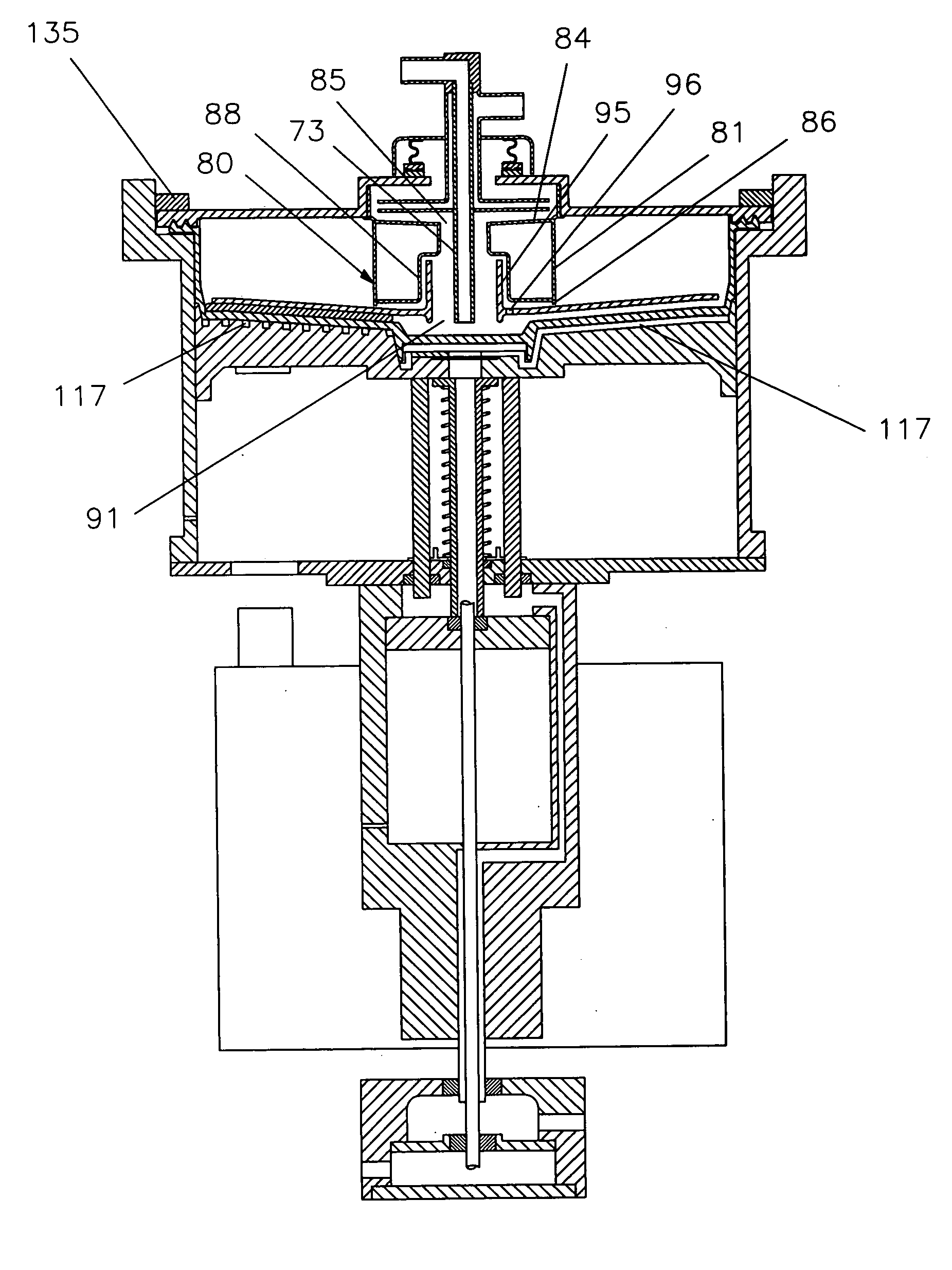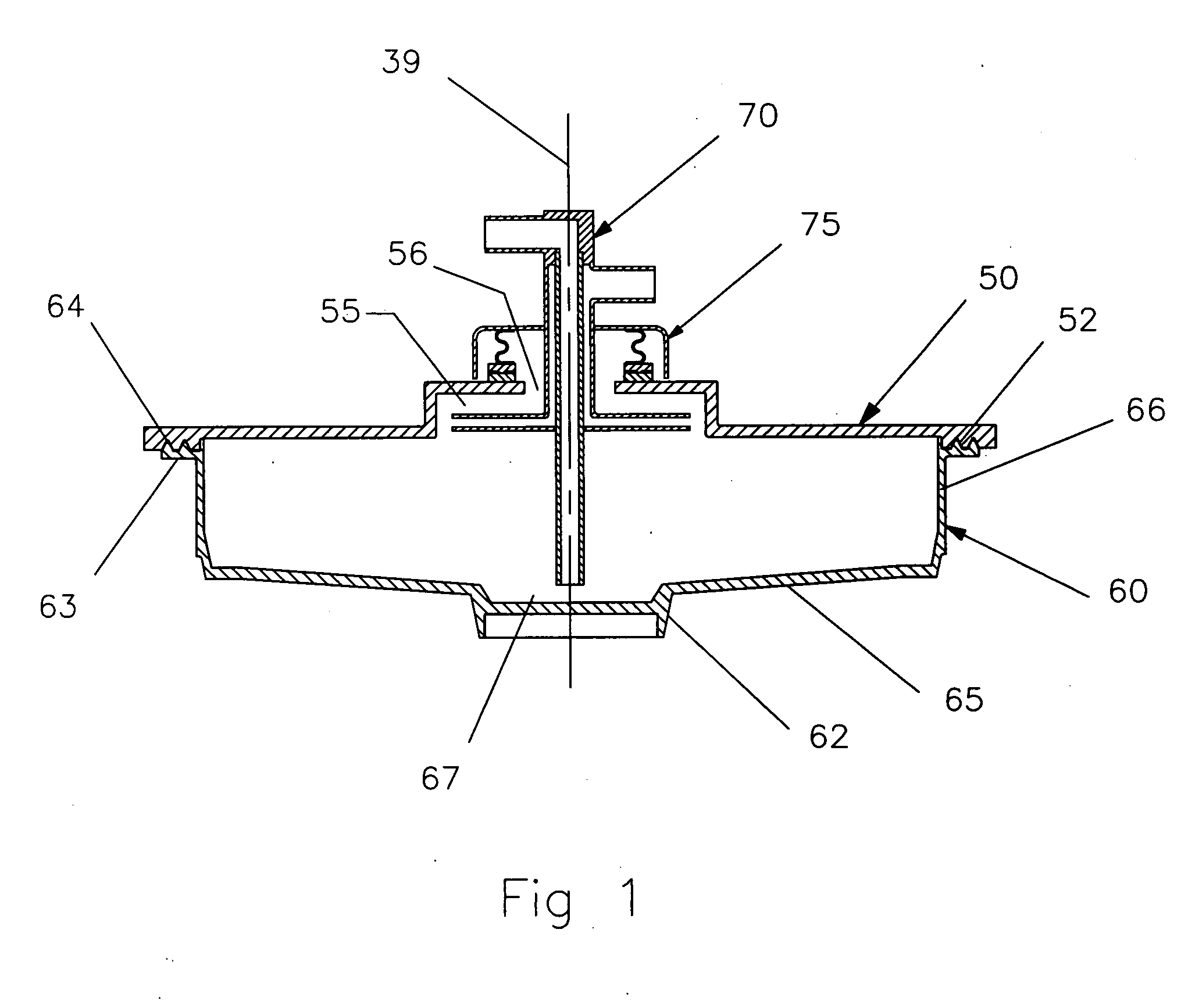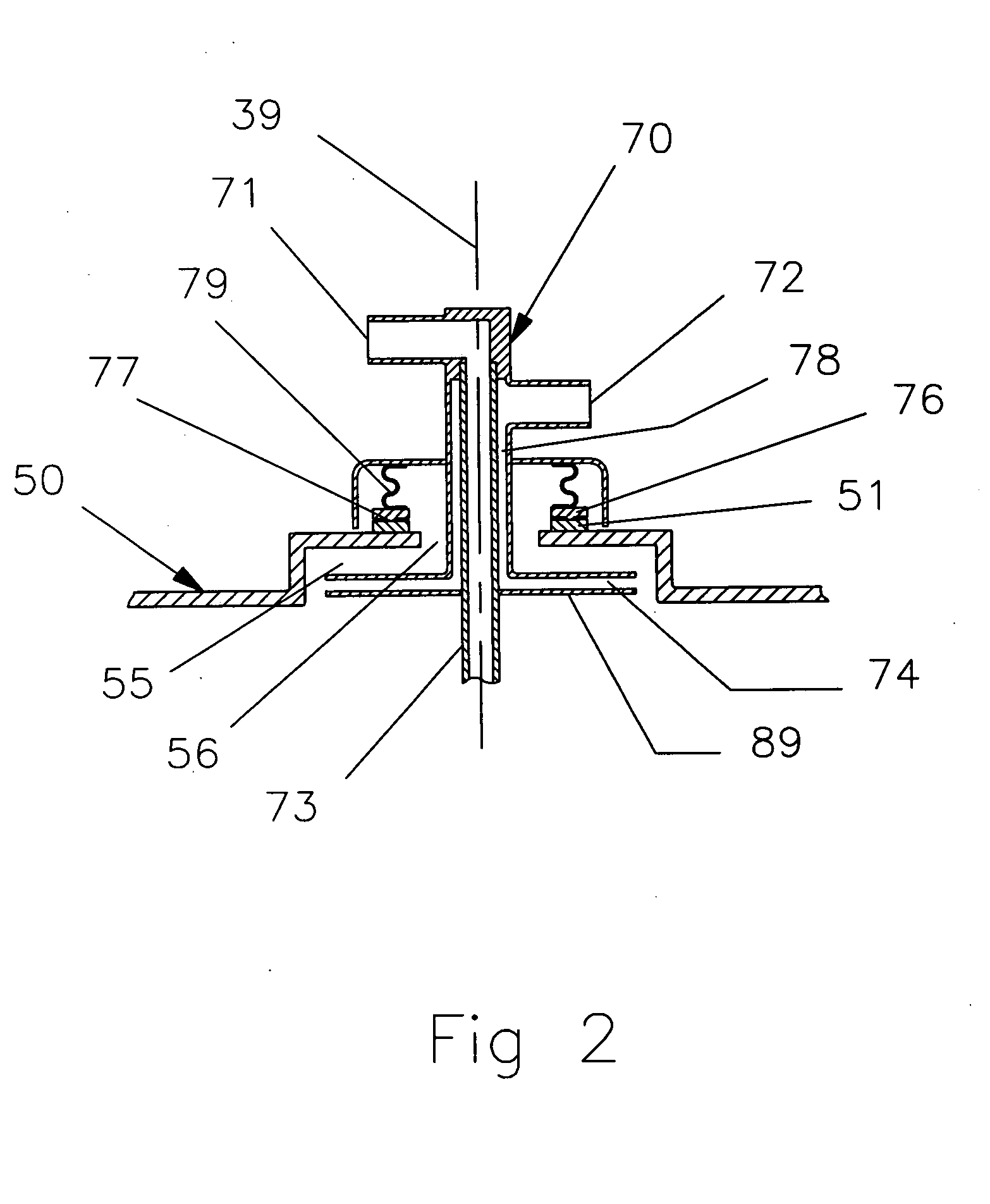Rotor defining a fluid separation chamber of varying volume
a fluid separation chamber and rotating technology, applied in the direction of centrifuges, rotary centrifuges, etc., can solve the problems of large continuous systems, large diameter, complicated setup and use, and use of two separate channels at the same time to drive blood, so as to increase reduce the capacity of the processing chamber, increase the effect of the processing chamber
- Summary
- Abstract
- Description
- Claims
- Application Information
AI Technical Summary
Problems solved by technology
Method used
Image
Examples
Embodiment Construction
[0047]FIG. 1 shows a cross sectional view of one version of the centrifuge rotor 30 according to the present invention. The rotor 30 has an elastic body 60, which is sealed to a rigid cover 50 by bonding, welding, or other means. The rigid cover is preferably made of clear and hard plastic material such as polycarbonate. The cover typically has the shape of a circular disc with a vertical extrusion at the center forming a small cylindrical chamber 55 referred to herein after as atrium. The top section of the atrium defines a circular opening 56 at the center. The cover, the atrium and the opening are concentric and have identical axis of rotation 39.
[0048] The elastic body is preferably made of a resilient and stretchable material, such as silicone rubber. The body has stretchable vertical wall 66 connecting the base 65 to the rim 63. The rim surface has a serration 64 that is used to seamlessly join the rim to a matching geometry 52 on the periphery of the cover generating a robus...
PUM
 Login to View More
Login to View More Abstract
Description
Claims
Application Information
 Login to View More
Login to View More - R&D
- Intellectual Property
- Life Sciences
- Materials
- Tech Scout
- Unparalleled Data Quality
- Higher Quality Content
- 60% Fewer Hallucinations
Browse by: Latest US Patents, China's latest patents, Technical Efficacy Thesaurus, Application Domain, Technology Topic, Popular Technical Reports.
© 2025 PatSnap. All rights reserved.Legal|Privacy policy|Modern Slavery Act Transparency Statement|Sitemap|About US| Contact US: help@patsnap.com



